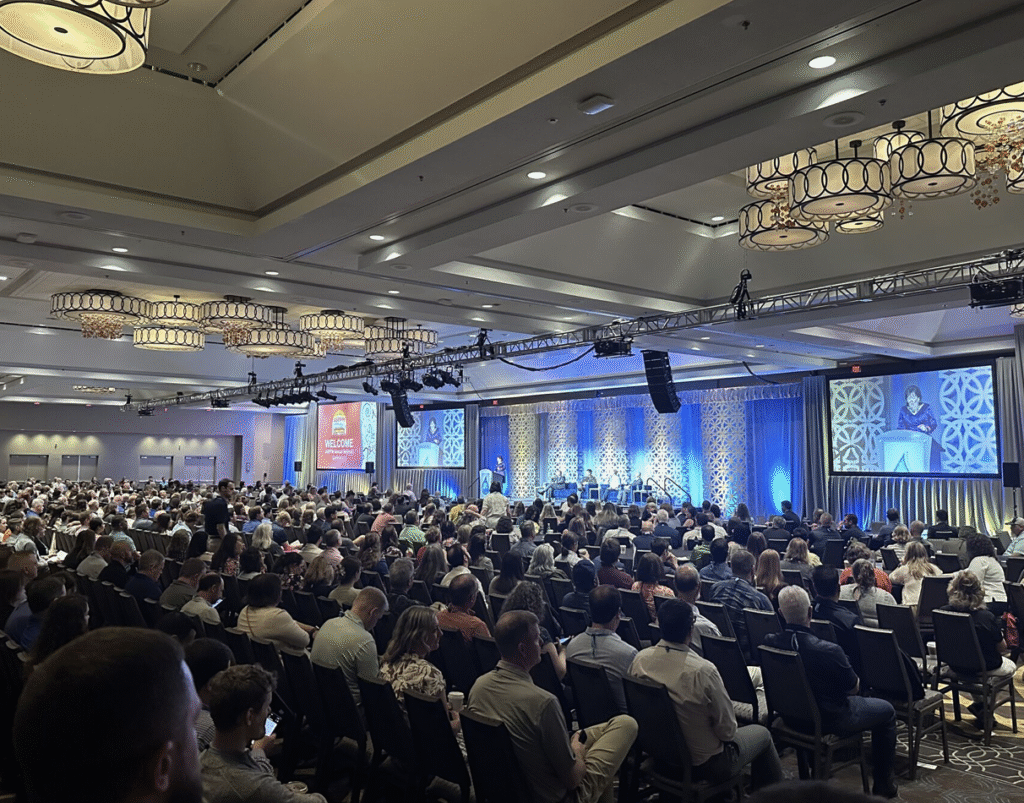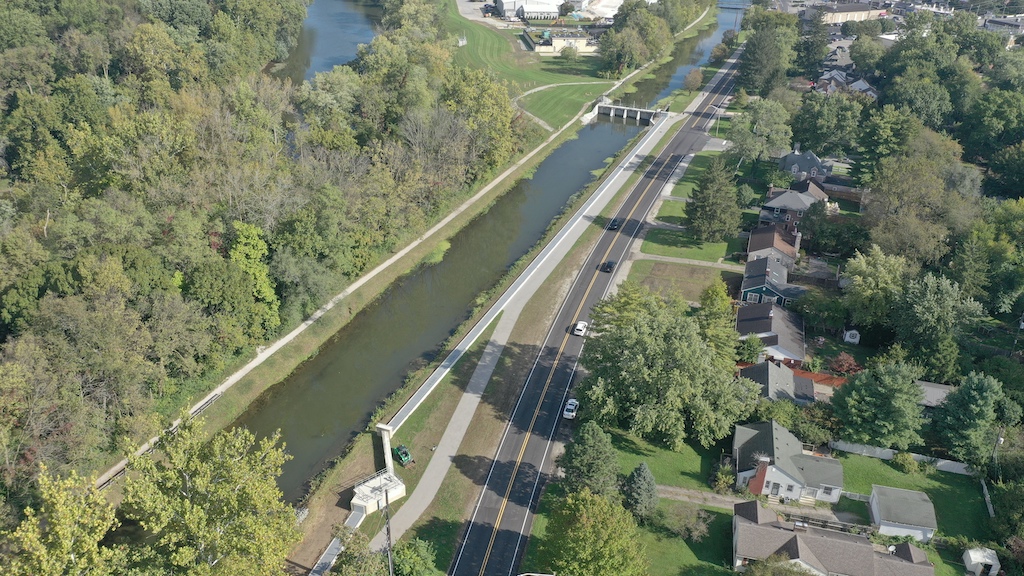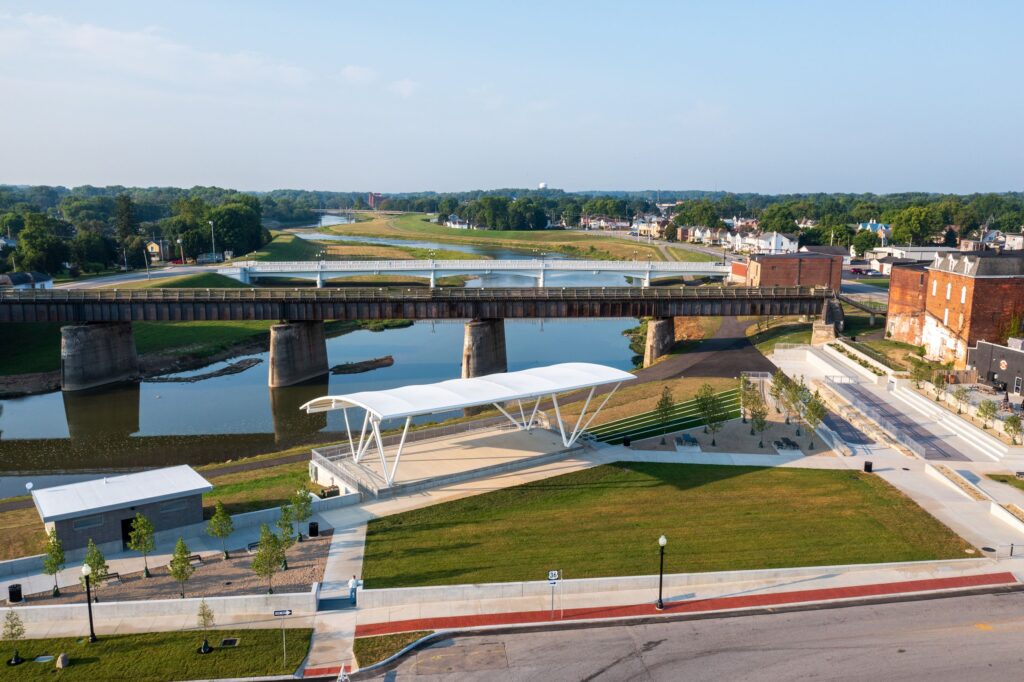Seeing Is Believing: New FloodBreak 3D Video

Seeing Is Believing 3D Video For over 20 years, our passive floodgate systems have stood the test of time, protecting critical infrastructure around the world without needing people, power, or warning. You’ve seen the real-world results in pictures: floodgates deployed in action, standing guard against flood devastation. But now, we’re giving you a whole new […]
Conference Season: Building Connections, Sharing Solutions

The past few months have been busy as the FloodBreak team attended four major hurricane & flood plain management conferences. We kicked things off in April at the National Hurricane Conference in New Orleans, then kept the momentum going in May with stops at the Governor’s Hurricane Conference in West Palm Beach, the ASFPM Annual […]
Unmatched Scalability: No Practical Height or Length Limitation

One of the most defining advantages of FloodBreak’s technology is its unparalleled scalability. Unlike traditional flood protection solutions, FloodBreak floodgates have no height or length limitations, making them the ultimate choice for a wide range of applications—from small, at-risk entry points to large-scale infrastructure projects. Our custom-fit, passive design ensures that every project receives the […]
2025 Recent Installs

Flood resilience is a growing priority for communities and infrastructure, and the latest installations of FloodBreak floodgates demonstrate a proactive approach to mitigating flood risks. These passive, self-deploying barriers require no human intervention or external power, ensuring reliable protection against rising waters. Designed for durability and efficiency, these newly installed floodgates seamlessly integrate into existing […]
Special Feature: Lou Waters on Coastal Resiliency at Landscape Scale at Annual Floodproofing.com Conference

At the Floodproofing.com Annual Meeting in New Jersey, FloodBreak had the privilege of continuing this partnership by furthering education on our flood mitigation solutions. Our collaboration is built on a shared commitment to advancing flood resilience through innovation and education. Education plays a vital role in flood mitigation, equipping professionals with the knowledge and tools […]
2024 Customer Work: Big & Small

Each FloodBreak floodgate is custom-designed to meet the specific flood protection needs of our customers. Increasingly, we’re collaborating with project teams on large-scale flood defenses like the Rawhide Wash project above. We designed our floodgates to improve the natural drainage path of a flash-flood system in Arizona while allowing the daily life of residents to […]
FloodBreak ISO 9001:2015 Certified: Upholding Excellence in Flood Protection

FloodBreak is honored to successfully complete our ISO-9001 audit once again. Since our founding in 2001, our mission remains the same: to develop innovative flood protection solutions that protect people and property from flood devastation and provide our customers with peace of mind. As we’ve grown and taken on larger, more complex projects, implementing, and […]
2 Day FloodBreak Testing Successful for South Battery Park Resiliency Project in New York

FloodBreak recently conducted a 2-day comprehensive shop test for one of the hydraulically actuated flip-up barriers being fabricated as part of the South Battery Park Resiliency project. The floodgate successfully met the stringent load and performance requirements. This video showcases the testing including all aspects of operation including load handling and is verified by […]
New Install: Texas Tech Uses FloodBreak Floodgate for AT&T Jones Stadium Flood Protection

We’re excited to announce our latest installation at Jones AT&T Stadium, home of the Texas Tech Raiders. FloodBreak has partnered with the university to secure a vulnerable pathway at their newly built South End Zone building leading to the field , ensuring the stadium remains protected year-round, especially with the current school year and football […]
Enhance Your FloodBreak Floodgate System with the Optional Hydraulic Lift

When it comes to flood protection, assurance that the flood barriers will deploy when needed is paramount. FloodBreak’s Automatic Floodgate system is 100% passive operation, requiring no human intervention or external power source to deploy during flooding events. You’re protected 24/7. The FloodBreak Automatic Floodgate system revolutionized flood mitigation. But what if you could add […]
